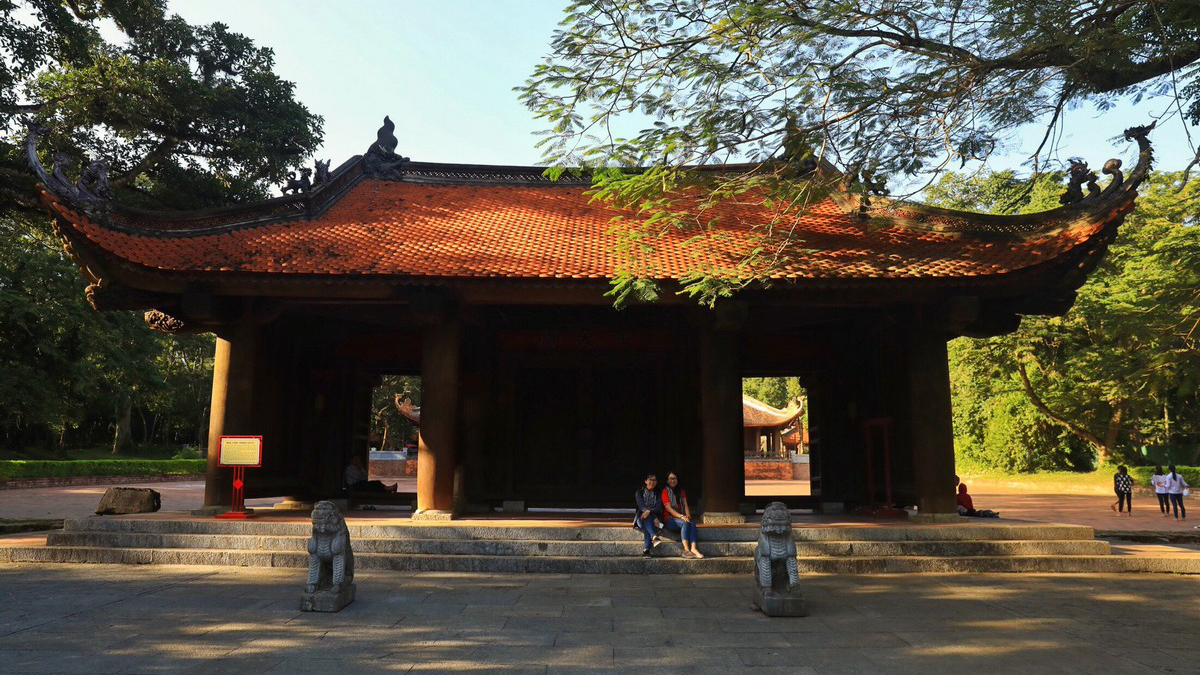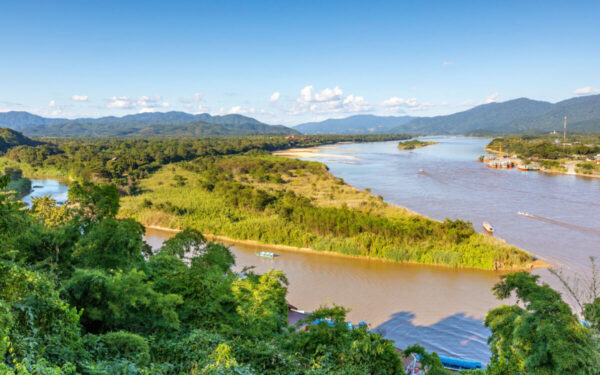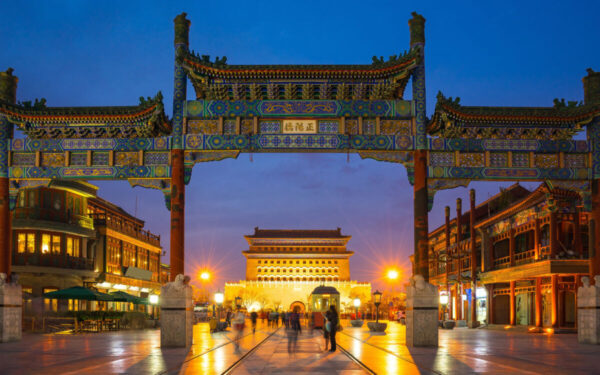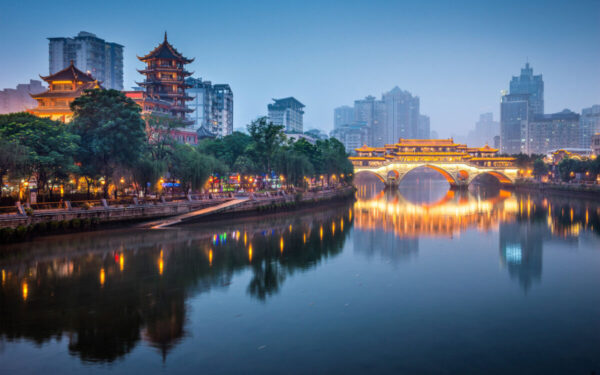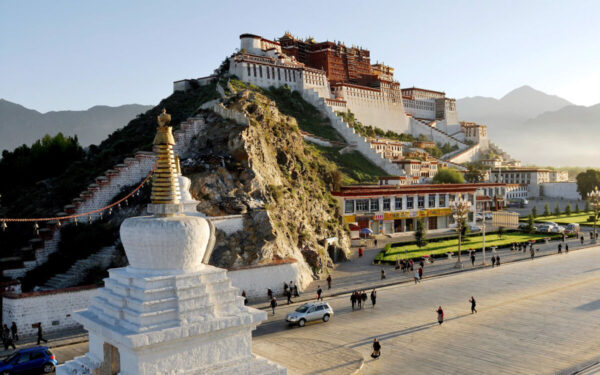When it comes to historical sites in Thanh Hoa, Lam Kinh, along with the Citadel of the Ho Dynasty, is a popular destination for history enthusiasts and those interested in exploring ancient secrets. Once the royal capital of the most prosperous feudal dynasty in Vietnamese history, this landmark is full of intriguing aspects that promise to provide an unforgettable experience for visitors.
Location of Lam Kinh Ancient Capital
Lam Kinh Thanh Hoa was a former capital established by King Le Thai To in 1428, marking the victory of the Lam Son uprising against the Ming Chinese invaders. It was constructed as a citadel in the king’s homeland to worship ancestors and serve as the final resting place for the kings of the Later Le dynasty.

The Lam Kinh historical site, also called Dong Kinh, covers an area of about 200 hectares in Tho Xuan district, Thanh Hoa province. The place is serene and expansive, with numerous temples, tombs, and verdant trees surrounding it.
Structure of Lam Kinh Ancient Capital
As a popular tourist destination in Thanh Hoa, the Lam Kinh Ancient Capital attracts visitors with its distinctive architectural layout. Its construction comprises key areas such as halls, temples, tombs, and spaces for strolling and relaxation, all arranged in a chessboard pattern.
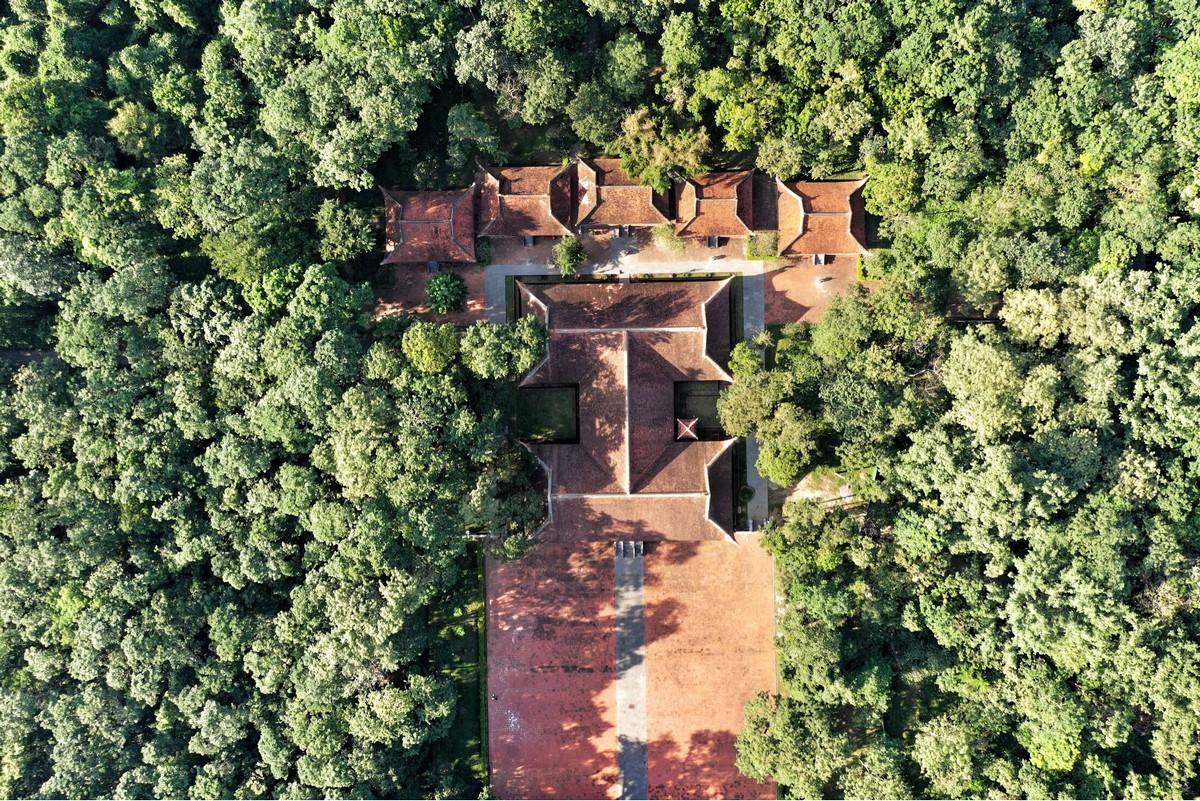
The entire citadel was located in an ideal position based on ancient feng shui principles, surrounded by Dau Mountain in the north, Chu River – Chua Mountain in the south, Phu Lam Forest in the east, and Huong Mountain – Ham Rong Mountain in the west. This prime location of the capital was believed to bring prosperity and peace to the entire country.
Usually, when visiting Lam Kinh, visitors follow a specific order to see the main attractions.
Ngoc River
The Ngoc River starts in Tay Ho commune and flows through the Lam Kinh area, along the pathway to the Lam Kinh Imperial Citadel. The water in the river is crystal clear, allowing visitors to see their reflections or admire the rounded stones along the riverbed.
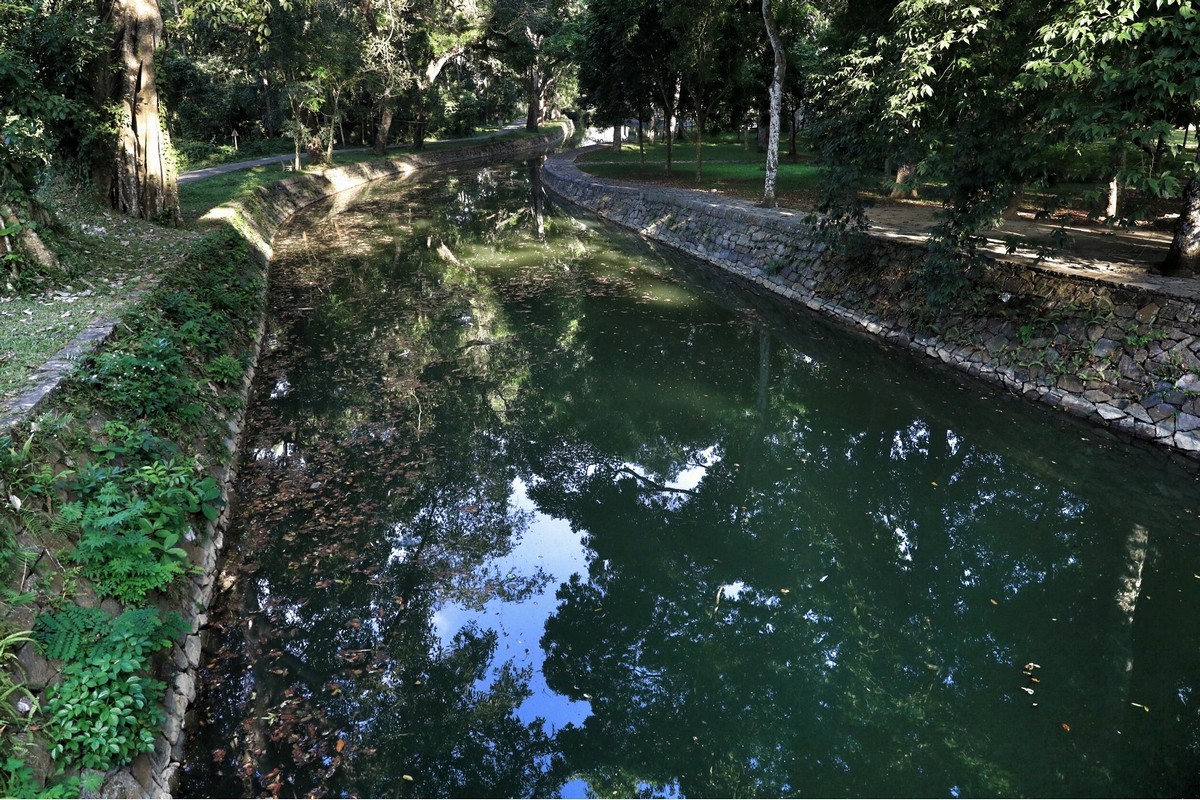
White Bridge – The ancient Ngoc Well
On the path leading to the main hall, there is a small, old stone bridge over the river called the White Bridge (Vietnamese: Bạch Kiều, Tiên Loan Kiều). The bridge is built in the shape of a parabolic arch over the Ngoc River, with a design that strongly reflects ancient Vietnamese architecture style.
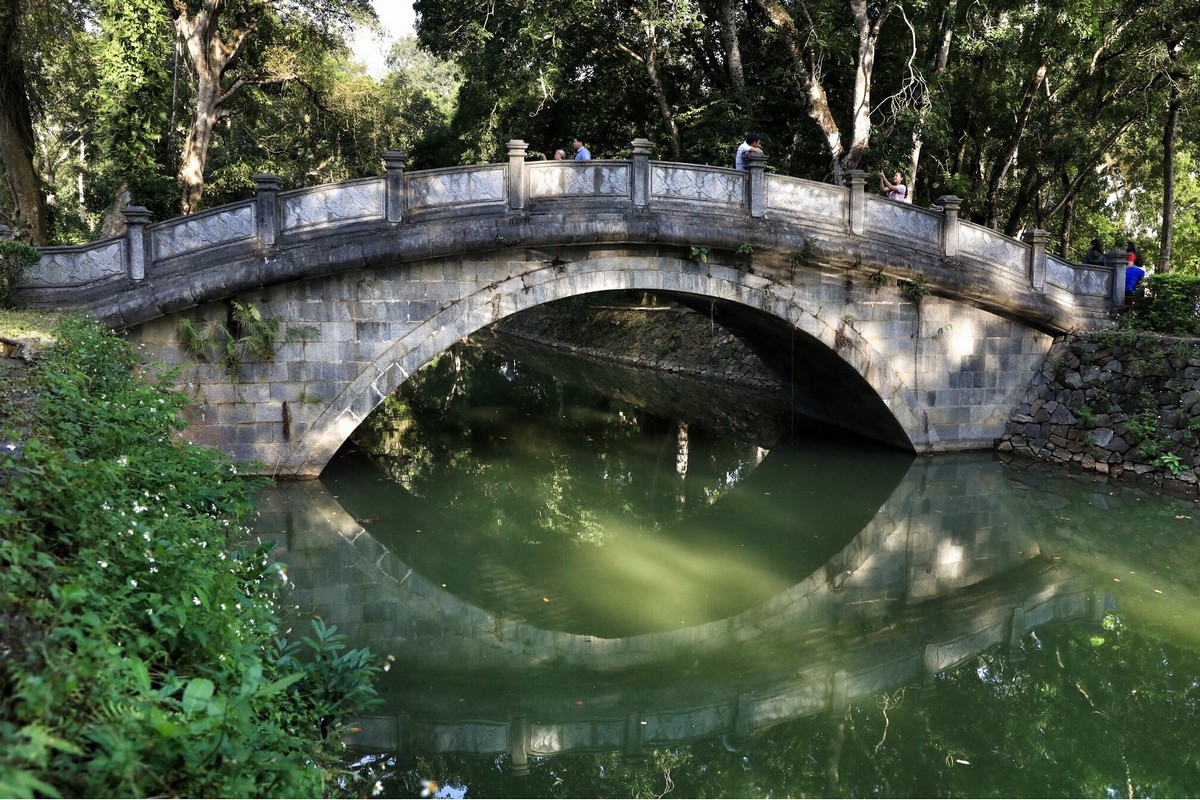
Fifty meters away from the White Bridge is a large, ancient well called Ngoc Well (Vietnamese: Giếng Ngọc). During the reign of the Later Le dynasty, it used to be a lotus swamp that was a beautiful scenery of the citadel during hot summer days.
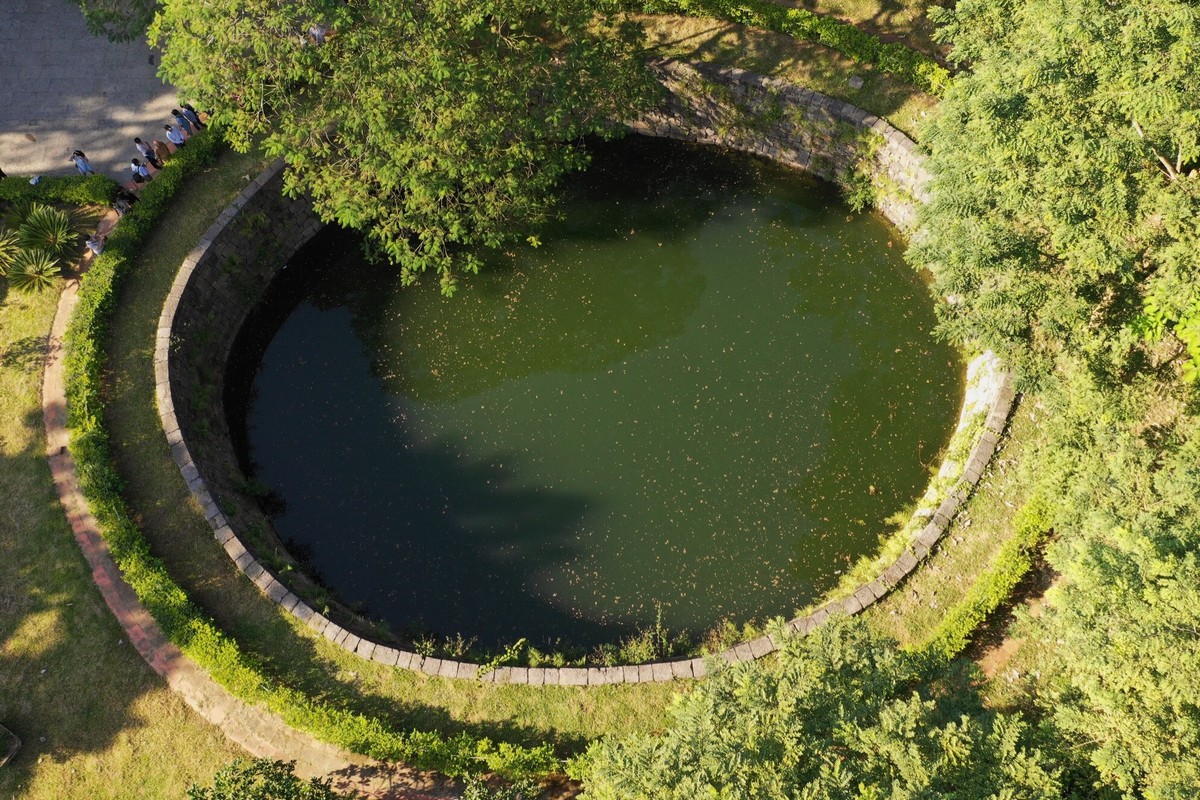
Main Temple Hall
The Main Temple Hall (Vietnamese: Chính Điện) is the largest structure in the Lam Kinh Ancient Capital, built with wooden architecture. To enter the Main Temple Hall, visitors first need to pass through the wide Meridian Gate (Vietnamese: Ngọ Môn) first, which has three entrances and two centuries-old stone lion statues guarding the gate.
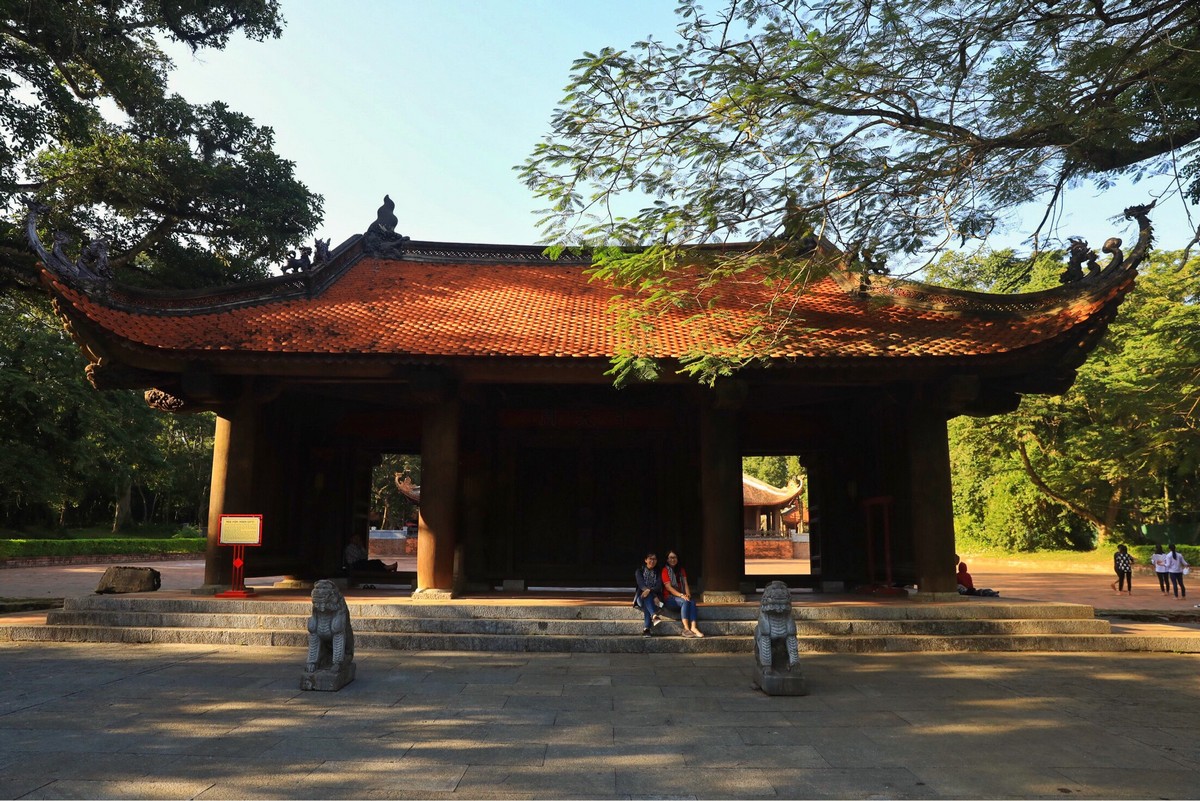
Upon passing through the gate, visitors arrive at the dragon yard, which covers over 3,500 square meters, and climb a large, 9-step staircase leading to the Main Temple Hall. The Main Temple Hall consists of three grand compartments built in the architectural style of the Later Le dynasty. The compartments feature various decorative patterns, such as lotus flowers, bodhi leaves, cirrus clouds, and dragons, among others.

Royal Temple
The Royal Temple (Vietnamese: Thái Miếu) was a revered place for worshiping the rulers and ancestors of the Later Le dynasty. It was a remarkable complex made up of nine strong buildings situated behind the Main Temple Hall, built with great care and significance. Currently, only five of the buildings have been rebuilt.

Tomb of King Le Thai To
The tomb of King Le Thai To is located 50 meters away from the Lam Kinh Main Temple Hall. It sits on a high and broad piece of land that resembles a turtle shell, surrounded by ancient trees that are hundreds of years old, such as jellyfish trees, banyan trees, and bodhi trees, among others.

Unlike the tombs of other feudal kings, the tomb of King Le Thai To has a unique square shape, with each side measuring 4.43m x 4.46m on each side with a height of 1m. The tomb’s construction involves tightly arranged bricks without any plaster, and instead of a roof, grass grows on its top. In front of the tomb, there are two lines of stone statues of court officials and mythical creatures facing each other, each delicately and elaborately carved.

This landmark features a minimalist design that reflects the humility, simplicity, and appreciation for the nature of King Le Thai To, one of the greatest heroes in Vietnamese history. Despite its minimalist design, visitors can still sense the solemn and dignified ambiance that permeates the tomb when visiting here.
The exhibition house of Lam Kinh relic site
After visiting the temples and tombs, don’t forget to stop by the exhibition house at the Lam Kinh relic site. Here, you can learn more about the Later Le Dynasty’s history and its intriguing legends. The exhibition house contains well-preserved artifacts from the dynasty, such as porcelain tea sets, bronze teapots, lotus-shaped incense burners, leaf-shaped decorative tiles, and the ancient pile foundation of the White Bridge, among others. All of these objects are kept in their original condition and are consistently maintained.
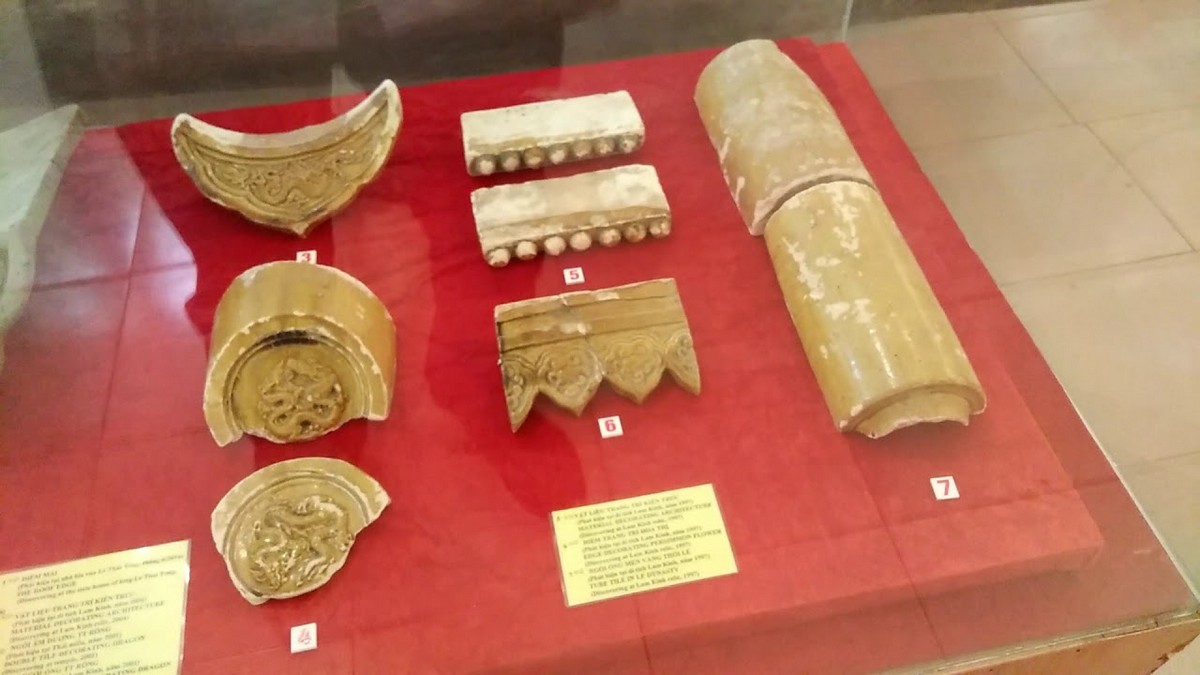
Aside from the historic objects, Lam Kinh has several interesting legends that attract tourists. One such legend is the tale of the “laughing guava tree.” When visitors touch and gently tap the tree’s trunk, the entire tree shakes and produces a strong gust of wind. Additionally, every time the guava tree “laughs,” it brings a sense of lightness and indescribable tranquility to those around it. Furthermore, there are numerous other tales and traditions associated with Lam Kinh that have been passed down through the ages, providing a unique insight into the history and culture of the region.
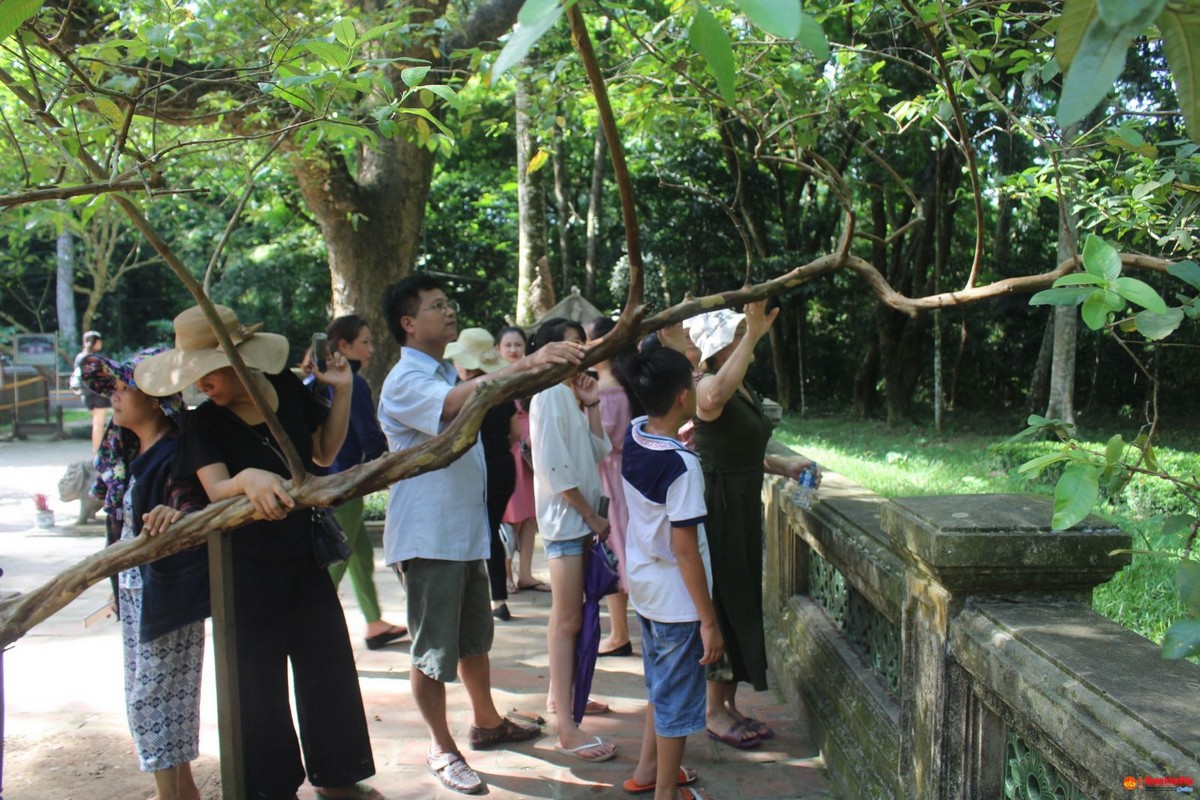
Lam Kinh Festival – An Impressive Event that Draws Thousands of Visitors to Lam Kinh
The Lam Kinh festival is held annually on the remembrance day of King Le Thai To, which falls on the 22nd day of the eighth lunar month. The festival is organized on a magnificent scale and has been held since the passing of King Le Thai To. It is a commemoration and honor of the venerable hero of the nation, who was laid to rest in Lam Son.

The Lam Kinh festival consists of two parts: the Ceremony and the Festival. The former involves traditional rituals held in the Main Temple Hall, such as drum and flag festivals, processions, and ritual ceremonies. The latter includes cultural and entertainment activities and folk games that reenact famous stories from the Later Le Dynasty. These activities not only bring joy to attendees, but also help future generations understand more about a heroic period in the nation’s history.
Best Time for Your Travel to Lam Kinh Ancient Capital
Lam Kinh is located in the central region of Vietnam in the town of Lam Son, Thanh Hoa. The weather is temperate, with mild summers and chilly winters, so visitors can choose the time to visit based on their travel plans. However, if you want to visit nearby Sam Son beach or Pu Luong, you should consider going between April and August.
Lam Kinh is a significant historical site and also offers a peaceful and green environment, making it an ideal destination for a short vacation with family and friends. Plan a trip to discover the ancient capital with Asia Legend Travel and enjoy a memorable experience!
